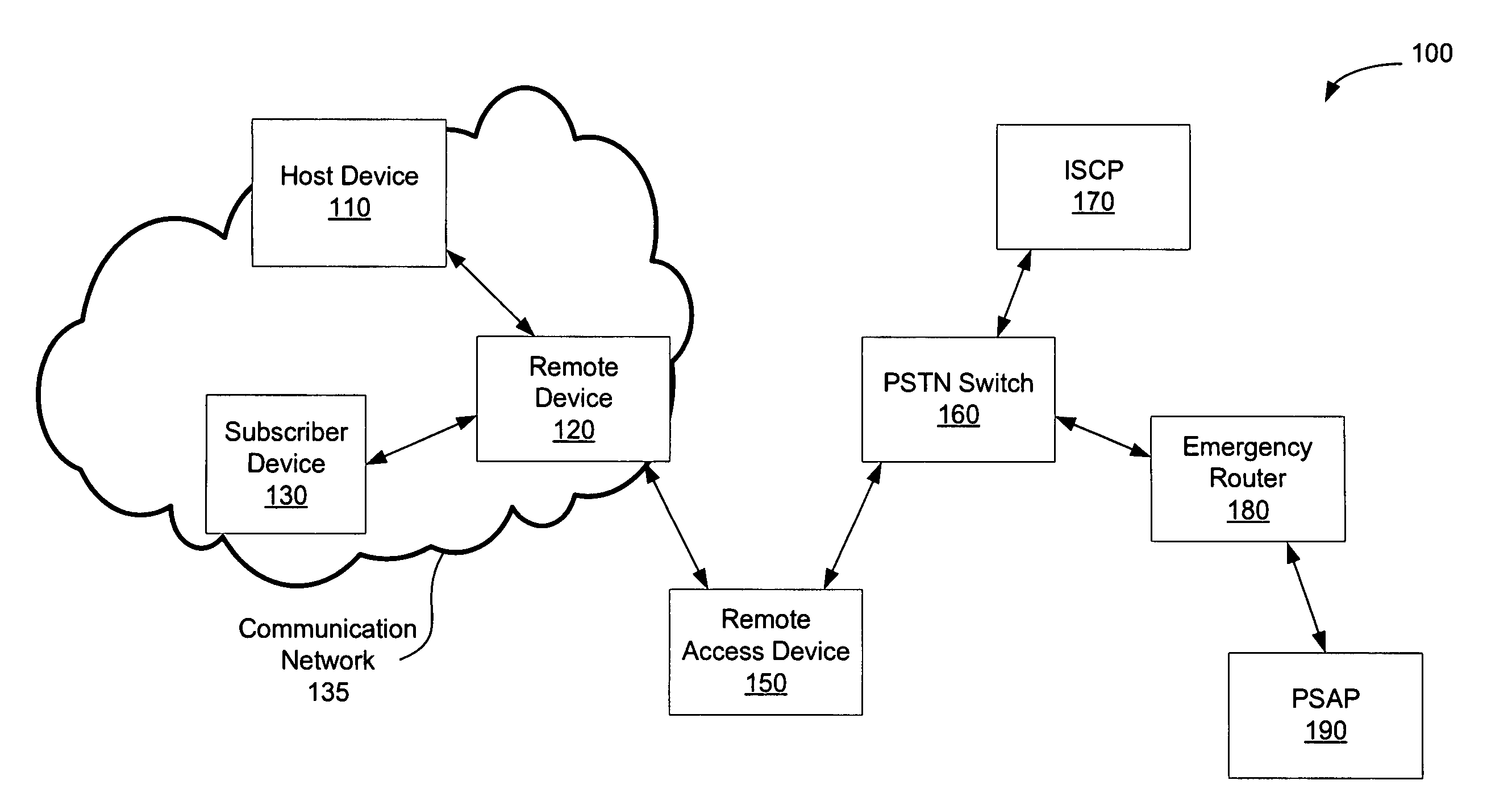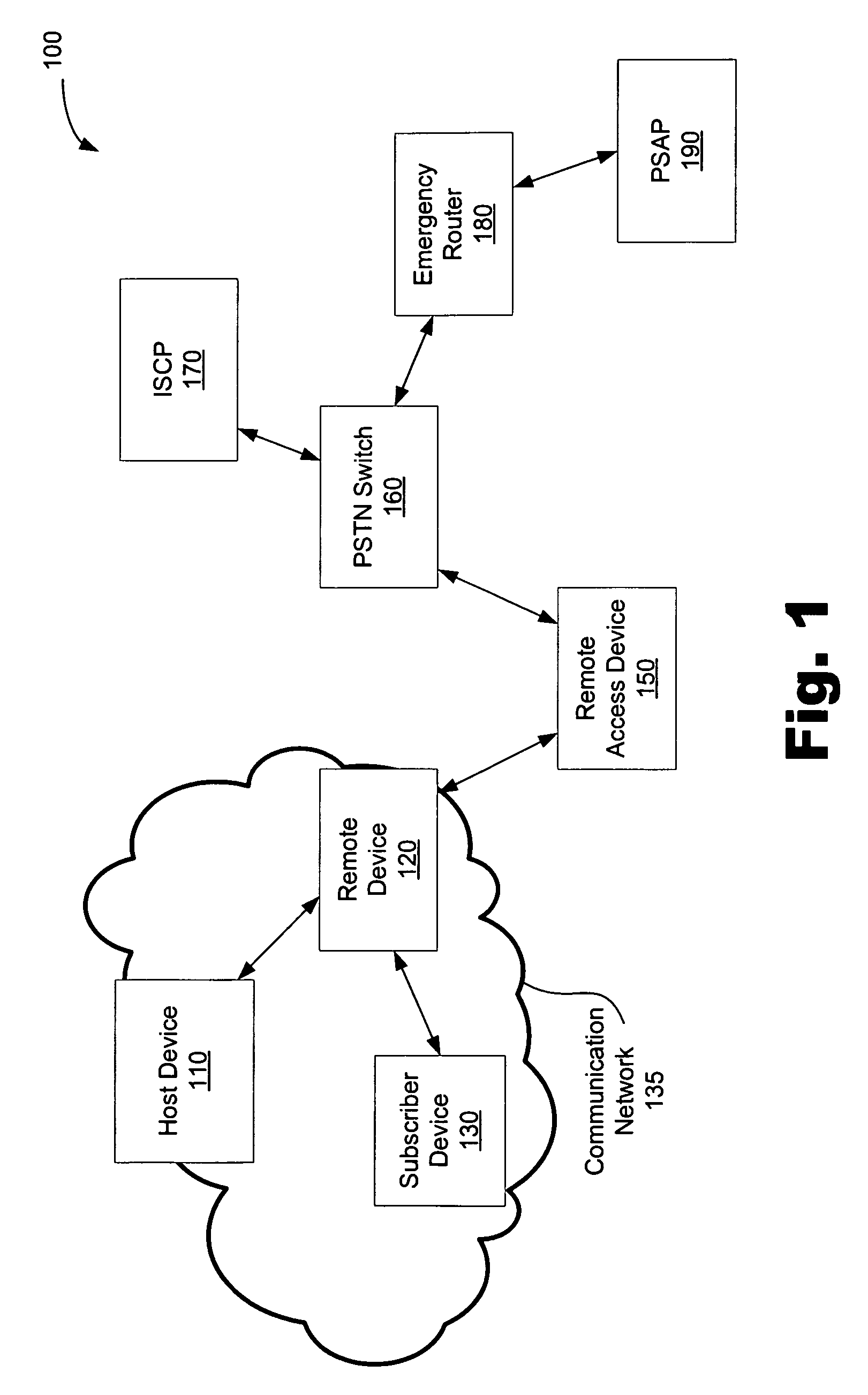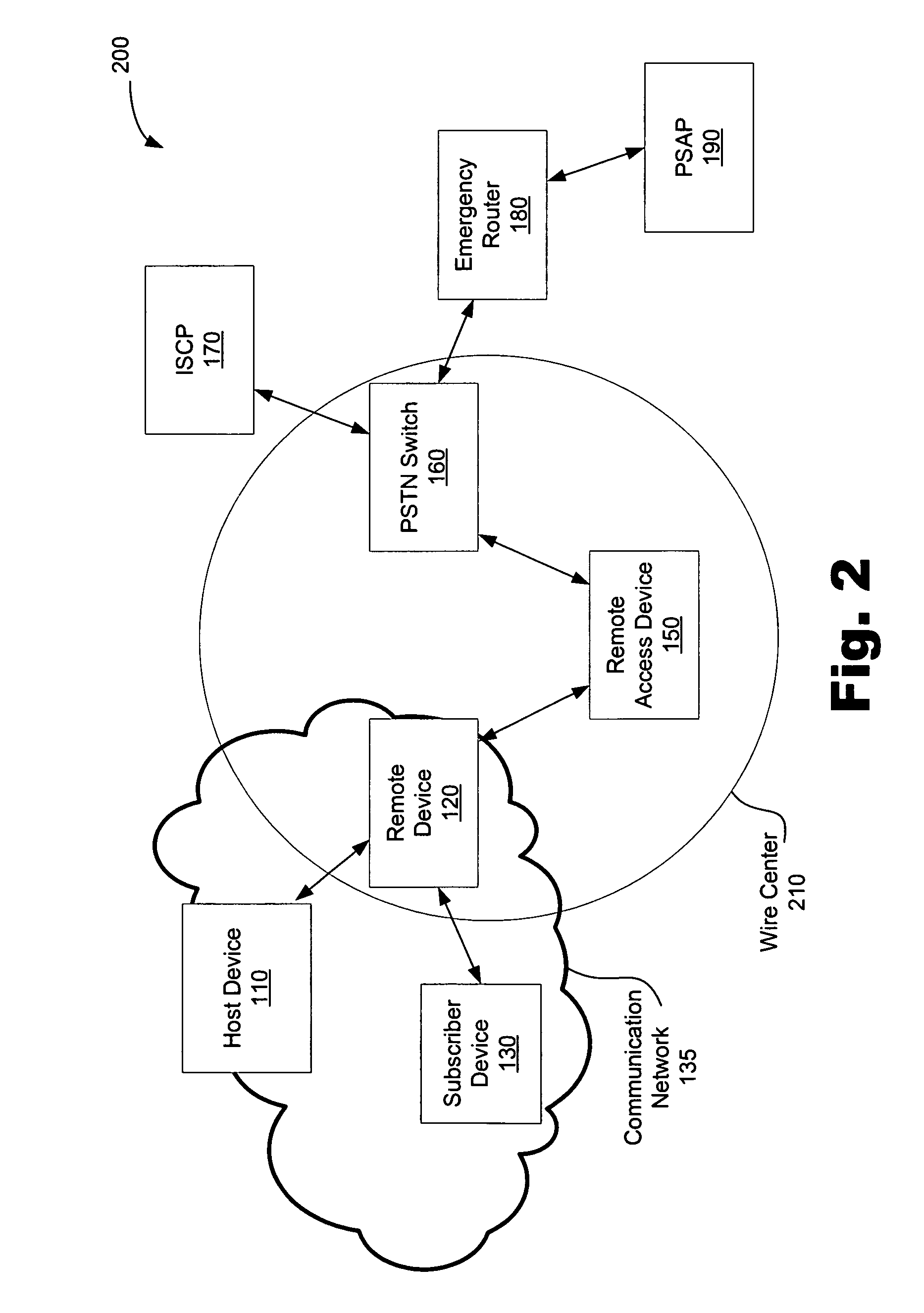Systems and methods for routing emergency communications
a technology of emergency communication and system, applied in the field of system and method for routing emergency communication, can solve the problems of host device failure remote device may be unable to communicate with its corresponding host device,
- Summary
- Abstract
- Description
- Claims
- Application Information
AI Technical Summary
Benefits of technology
Problems solved by technology
Method used
Image
Examples
Embodiment Construction
I. Overview
[0013]Preferred embodiments according to the present invention may be implemented as systems and methods for routing emergency communications in Emergency Standalone (“ESA”) mode. While the exemplary embodiments described herein relate to the routing of emergency “911” communications, other embodiments may similarly route other types of communications associated with predetermined directory numbers, including emergency communications associated with directory numbers other than “911.” Emergency 911 communications will be understood by those skilled in the art.
[0014]According to certain embodiments, when an emergency 911 communication is received by a remote device in ESA mode, the remote device is able to forward the emergency communication to a line terminated by a remote access device, which is in turn connected to a Public Switched Telephone Network (“PSTN”) switch. The remote access device may be configured to form a connection between the remote device and a PSTN swi...
PUM
 Login to View More
Login to View More Abstract
Description
Claims
Application Information
 Login to View More
Login to View More - R&D
- Intellectual Property
- Life Sciences
- Materials
- Tech Scout
- Unparalleled Data Quality
- Higher Quality Content
- 60% Fewer Hallucinations
Browse by: Latest US Patents, China's latest patents, Technical Efficacy Thesaurus, Application Domain, Technology Topic, Popular Technical Reports.
© 2025 PatSnap. All rights reserved.Legal|Privacy policy|Modern Slavery Act Transparency Statement|Sitemap|About US| Contact US: help@patsnap.com



